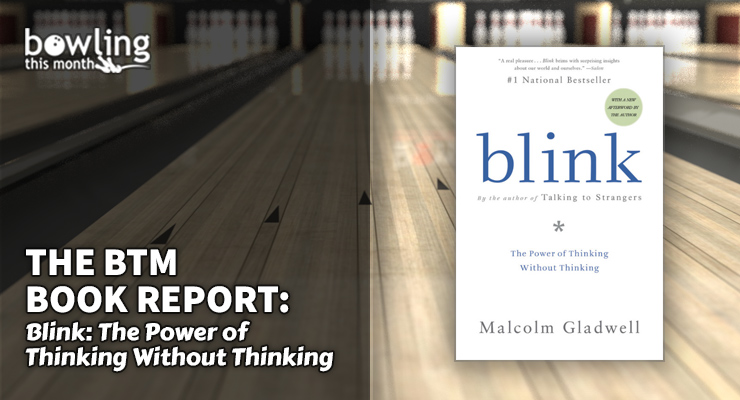Blink is the second offering from Malcolm Gladwell that we’re reviewing as part of our BTM Book Report series. While Outliers focused on the factors affecting success in a range of fields and subjects, Blink tackles the idea of good decision-making. By presenting stories and research into how we make decisions, Gladwell offers some valuable insight into making better decisions more quickly that are very applicable to the decisions we often make on the lanes as bowlers.
The first key concept for bowlers is the value of what he refers to as “thin slices.” Many times, we think that more information yields better results, but often it is the opposite. With the right expertise, smaller, highly relevant chunks of information can be enough to make good decisions. One example given is that of John Gottman, who can watch a 15-minute video of a discussion between husband and wife and predict with 90% accuracy if they will still be married in 15 years. This thin slice of information is enough in the hands of an expert who knows how to look for the appropriate cues.
Gladwell also presents the dangers of “thin-slicing” when bias is involved. Often, decisions based on thin slices can be very inaccurate when we fall prey to unconscious bias or preconceived ideas. He uses word association to illustrate how seemingly innocuous pieces of information can trigger a bias. This is why objective expertise is so important.
In the section about spontaneity, Gladwell also presents the importance of structure. This seems counterintuitive, but he argues that structured practice yields more freedom for being spontaneous in making decisions. One example to illustrate this point is an improv comedy troupe. This group has intense rehearsals and debriefs every performance, which allows them to be free in one of the most spontaneous forms of performance there is.
One of the key rules within the structure is “agreement.” For an improv skit to be successful, each actor must “accept” what their counterpart has given them in order to maintain flow. This level of acceptance must be mutual for things to flow successfully. In an example using war games, the same concept comes through: structure and agreement are paramount to successful decision-making.
A third important section of this book ...
This article is only available to Bowling This Month subscribers. Click below to get instant access to this article and all of our other premium instructional content.
Subscribe to Bowling This Month
Already a Bowling This Month subscriber? Click here to log in.
